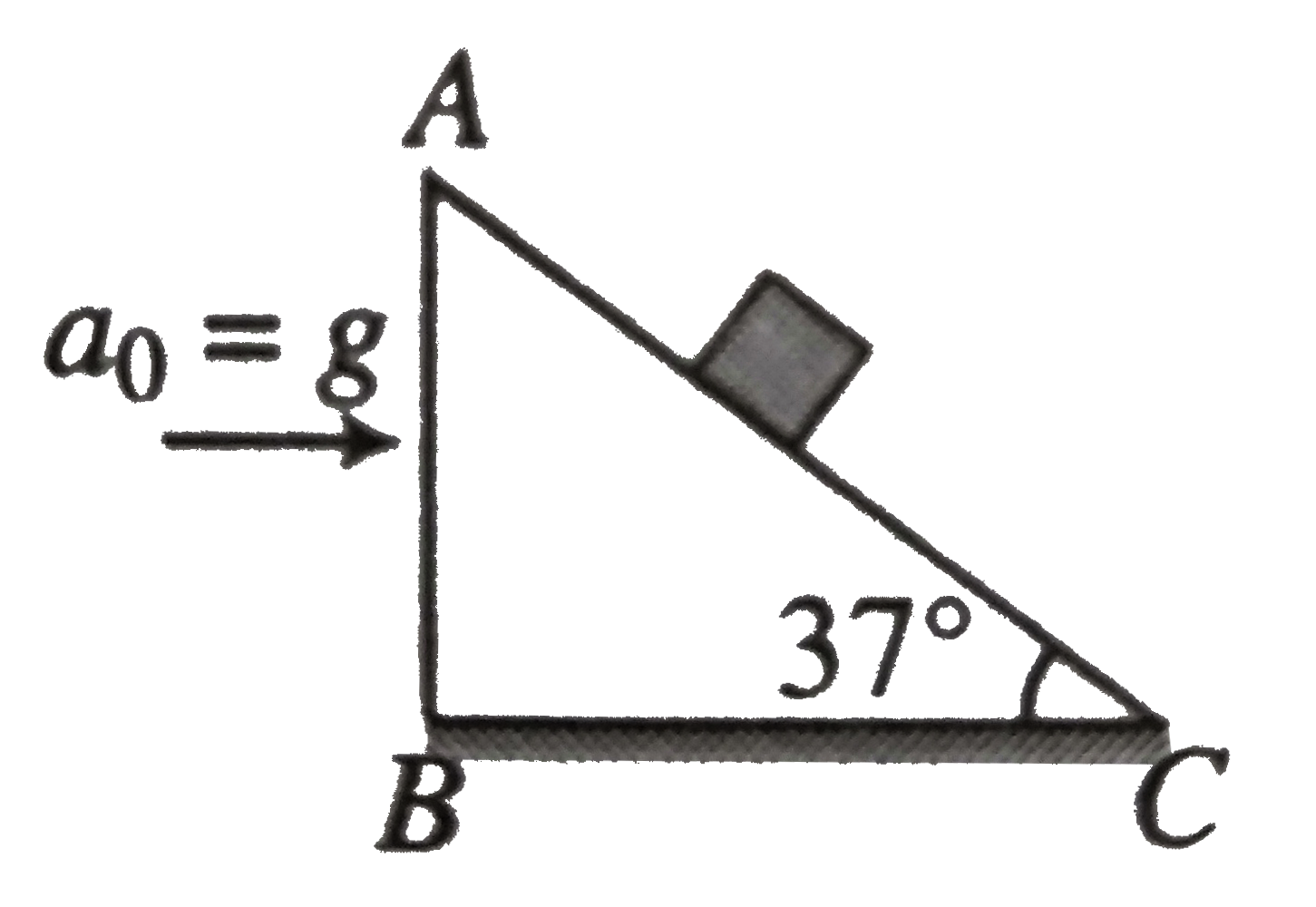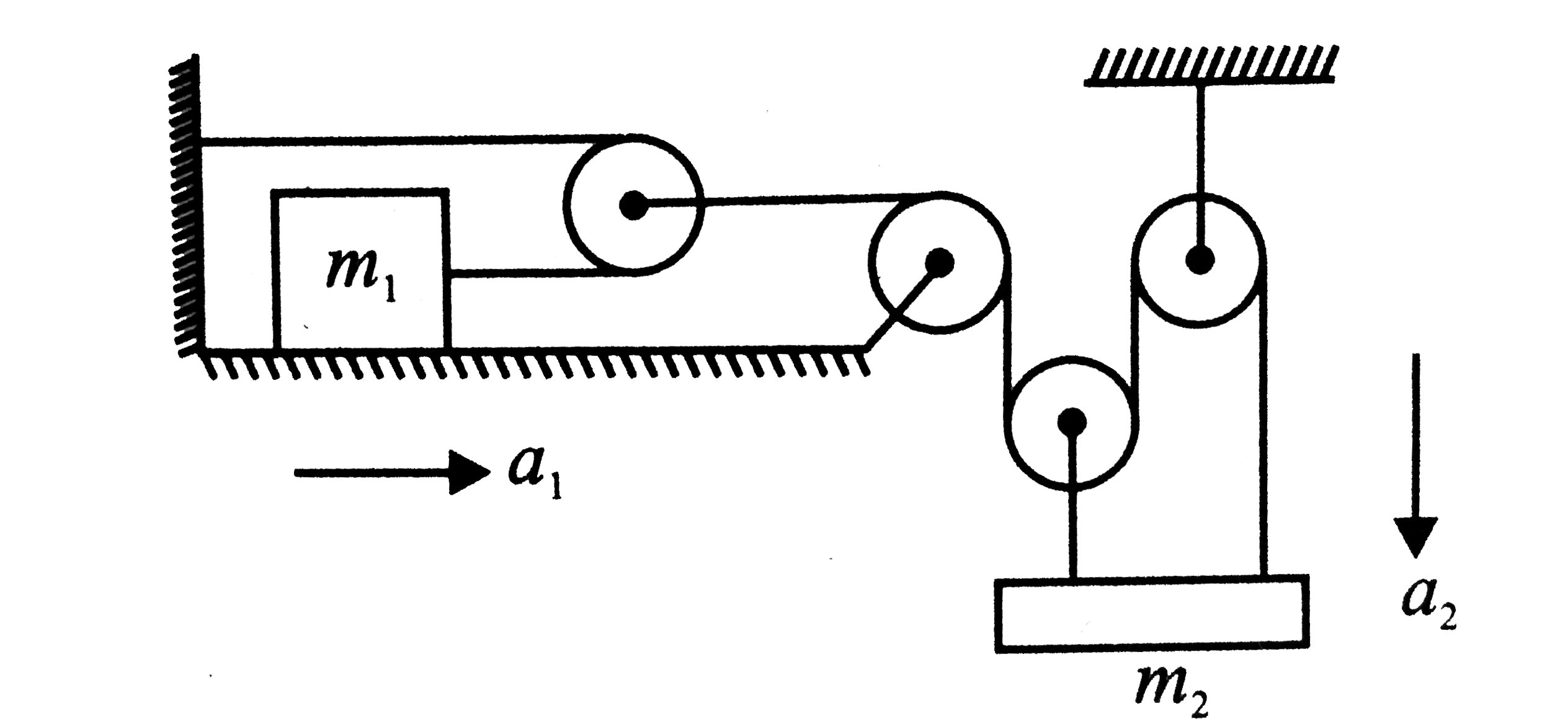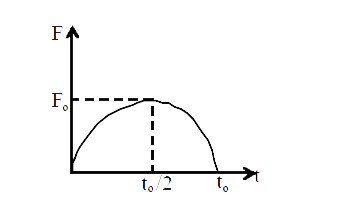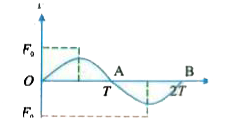A time varying force F=6t−2t2N, at t=0 starts acting on a body of mass 2kg initially at rest, where t is in second. The force is withdrawn just at the instant when the body comes to rest again. We can see that at t=0 the force F=0. Now answer the following:
Mark the correct statement:
Velocity of the body is maximum when force acting on the body is maximum for the first time.
The velocity of the body becomes maximum when force acting on the body becomes zero again.
When force becomes zero again, velocity of the body also becomes zero at that instant.
All of the above
The correct Answer is:B
To solve the problem, we will analyze the time-varying force and its effect on the motion of the body. The force is given by:
F(t)=6t−2t2N
The mass of the body is:
m=2kg
Step 1: Determine when the force becomes zero
To find out when the force becomes zero, we set the force equation to zero:
6t−2t2=0
Factoring out t:
t(6−2t)=0
This gives us two solutions:
1. t=0
2. 6−2t=0 which simplifies to t=3
Step 2: Analyze the motion of the body
The force acts on the body from t=0 to t=3 seconds. We need to find the velocity of the body when the force is withdrawn (i.e., at t=3 seconds).
Step 3: Calculate acceleration
The acceleration a(t) can be calculated using Newton's second law:
a(t)=F(t)m=6t−2t22=3t−t2
Step 4: Integrate acceleration to find velocity
To find the velocity, we integrate the acceleration with respect to time:
dvdt=3t−t2
Integrating both sides from t=0 to t=T and v=0 to v=V:
∫V0dv=∫T0(3t−t2)dt
Calculating the right-hand side:
V=(3t22−t33)T0=3T22−T33
Step 5: Substitute T=3
Now substituting T=3:
V=3(32)2−(33)3=3×92−273
Calculating:
V=272−9=272−182=92m/s
Step 6: Conclusion
At t=3 seconds, the velocity of the body is 92m/s, which is not zero. Therefore, the correct statement is:
- The velocity of the body will become maximum when the force acting on the body becomes zero again.
To find out when the force becomes zero, we set the force equation to zero:
2. 6−2t=0 which simplifies to t=3
The force acts on the body from t=0 to t=3 seconds. We need to find the velocity of the body when the force is withdrawn (i.e., at t=3 seconds).
The acceleration a(t) can be calculated using Newton's second law:
To find the velocity, we integrate the acceleration with respect to time:
Now substituting T=3:
At t=3 seconds, the velocity of the body is 92m/s, which is not zero. Therefore, the correct statement is:
Topper's Solved these Questions
- NEWTON'S LAWS OF MOTION 1Book:CENGAGE PHYSICS ENGLISHChapter:NEWTON'S LAWS OF MOTION 1Exercise:Integer
Explore 5 Videos
- NEWTON'S LAWS OF MOTION 1Book:CENGAGE PHYSICS ENGLISHChapter:NEWTON'S LAWS OF MOTION 1Exercise:Assertion-reasoning
Explore 15 Videos
- MISCELLANEOUS VOLUME 2Book:CENGAGE PHYSICS ENGLISHChapter:MISCELLANEOUS VOLUME 2Exercise:INTEGER_TYPE
Explore 10 Videos
- NEWTON'S LAWS OF MOTION 2Book:CENGAGE PHYSICS ENGLISHChapter:NEWTON'S LAWS OF MOTION 2Exercise:Integer type
Explore 1 Video
Similar Questions
A block is placed on an inclined plane moving towards right horizontally with an acceleration a0=g. The length of the plane AC=1m. Friction is absent everywhere. Find the time taken (in seconds) by the block to reach from C to A.

View SolutionStatement I: The driver of a moving car sees a wall in front of him. To avoid collision, he should apply brakes rather than taking a turn away from the wall.
Statement II: Frictional force is needed to stop the car or taking a turn on a horizontal road.
View SolutionTwo blocks are arranged as shown in figure. Find the ratio of a1/a2. (a1 is acceleration of m1 and a2 that of m2)

View SolutionA block is moving on an inclined plane making an angle 45∘ with the horizontal and the coefficient of friction is μ. The force required to just push it up the inclined plane is 3 times the force required to just prevent it from sliding down. If we define N=10μ, then N is
View SolutionA time varying force F=6t-2t^(2)N , at t=0 starts acting on a body of mass 2kg initially at rest, where t is in second. The force is withdrawn just at the instant when the body comes to rest again. We can see that at t=0 the force F=0 . Now answer the following: Find the duration for which the force acts on the body.
View SolutionA time varying force F=6t−2t2N, at t=0 starts acting on a body of mass 2kg initially at rest, where t is in second. The force is withdrawn just at the instant when the body comes to rest again. We can see that at t=0 the force F=0. Now answer the following:
Find the time when the velocity attained by the body is maximum.
View SolutionA time varying force F=6t−2t2N, at t=0 starts acting on a body of mass 2kg initially at rest, where t is in second. The force is withdrawn just at the instant when the body comes to rest again. We can see that at t=0 the force F=0. Now answer the following:
Mark the correct statement:
View SolutionA block is resting over a rough horizontal floor. At t = 0 a time -verying force starts acting on it , the force is described by equation F = kt where k is constant and r is in seconds Marks the cerrect statement (s) for this situation .
View SolutionA unidirectional force F varying with time t as shown in the Fig. acts on a body initially at rest for a short duration 2T . Then the velocity acquired by the body is
View SolutionA unidirectional force F varying with time t as shown in the figure acts for a short duration 2T on a particle which is initially at rest. Then the velocity acquired by the body is:
View SolutionA force given by the relation F = 8t, (F in Newton and t in sec.) acts on a body of mass 2kg. Initially at rest. Choose the correct option.
View SolutionThe force F = 2t2 is applied on the 2 kg block. Then find out the work done by this force in 2sec. Initially at time t = 0, block is at rest.
View SolutionA variable force acts on a body of mass m (initially at rest) from t = 0 to t = t0. The curve of F plotted versus t is semicircle as shown, then -

View SolutionA unidirectional force F varying with time t as shown in the Fig. acts on a body initially at rest for a short duration 2T. Then the velocity acquired by the body is

View SolutionA unidirectional force F varying with time t as shown in the. fig. acts on a body initially at rest for a short duration 2T. Then the velocity acquired by the body is:

View Solution
